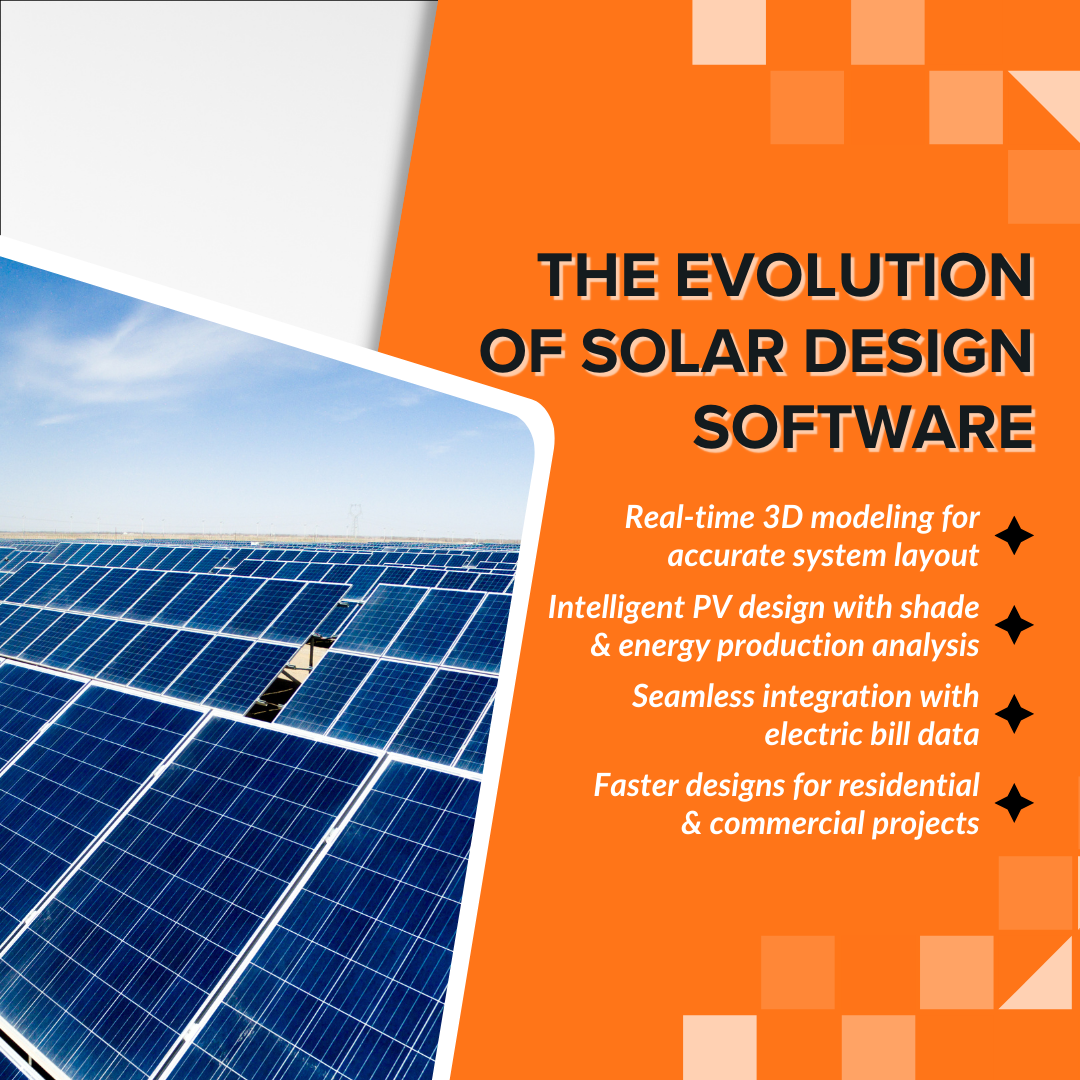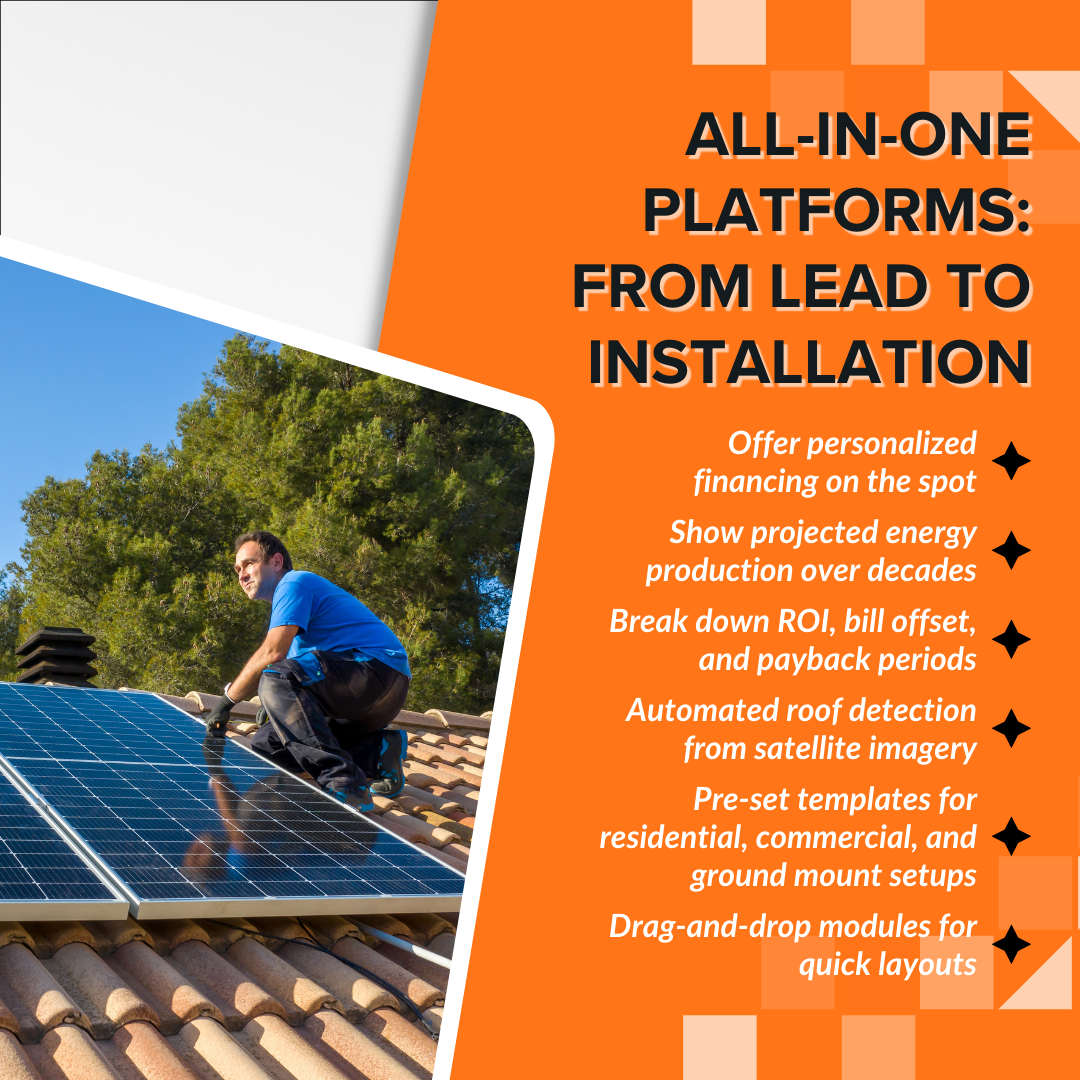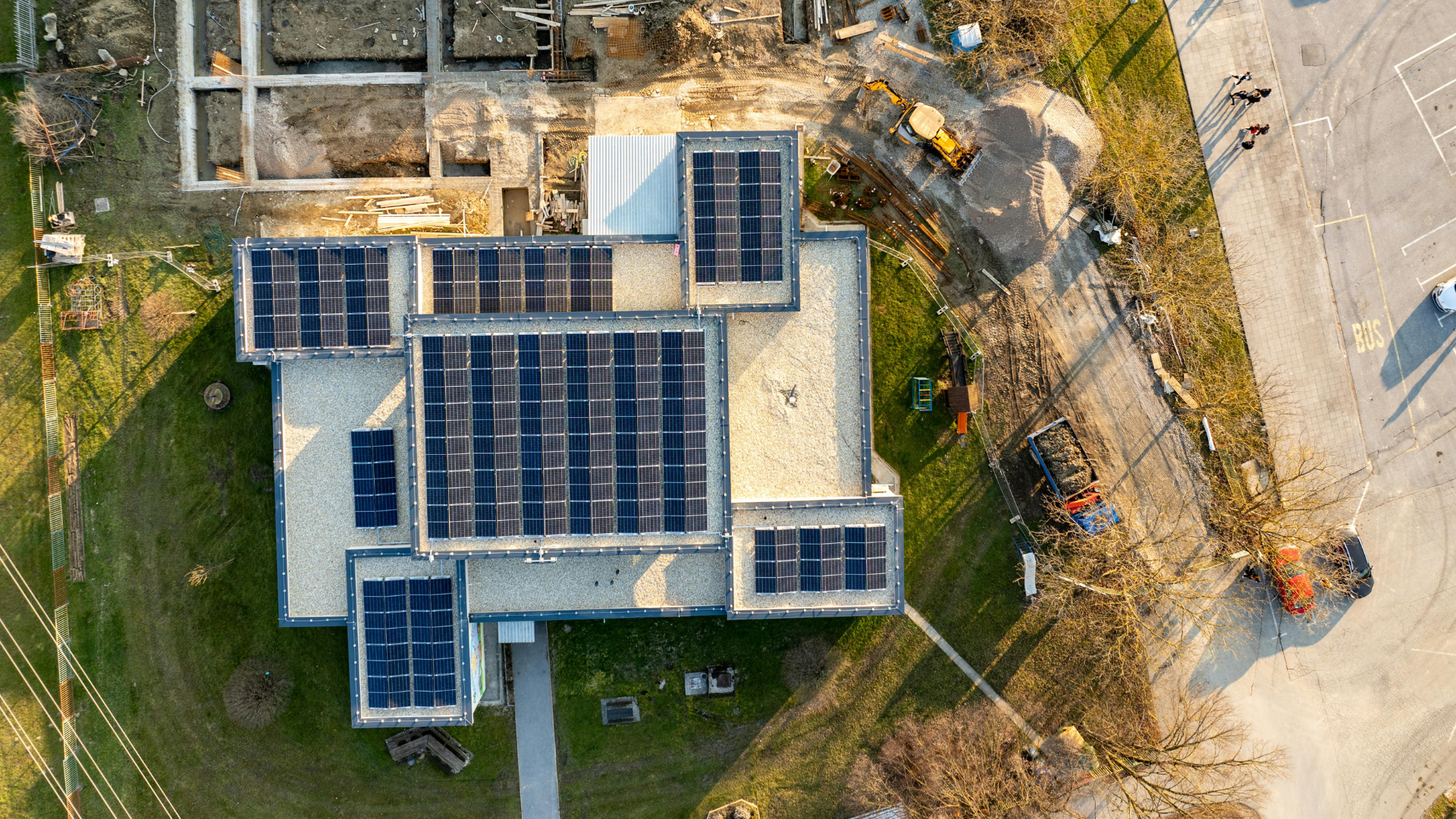May 5, 2025
2025 is shaping up to be a big year for the solar industry.
As more people want clean, affordable energy, solar companies are improving not just how they install systems, but also how they design, develop, and deliver the whole experience.
The good news?
Solar design software, with automated features, is finally meeting the needs of today’s solar pros, making work easier in the ways that matter most.
Key Takeaways
- Solar design software is transforming in 2025, with a focus on speed, precision, and simplified workflows.
- Advanced features like real-time 3D modeling, shade analysis, electric bill simulations, panel layout, and system configuration enhance design accuracy.
- For solar professionals, choosing the right tool means finding a platform that’s scalable, intuitive, and aligned with evolving customer expectations.
- Sunbase is the best choice for solar businesses, making everything simpler so teams can focus on growth and clean energy.
The Evolution of Solar Design Software

Remember when photovoltaic system design and solar development felt like decoding a puzzle?
Gone are the days of clunky design processes and fragmented tools.
Modern solar design platforms are simplifying how solar professionals work by combining powerful functionality, boosting efficiency, and offering sleek, intuitive user interfaces.
Today’s leading platforms allow for:
- Real-time 3D modeling
- Intelligent PV design with shade and energy production analysis
- Seamless integration with utility rates for electric bill simulation
- A faster, more accurate approach to both residential and commercial solar systems
The solar landscape is changing rapidly, and in 2025, innovation means making technology work for people.
Tools are no longer designed just for engineers; they’re built for sales teams, homeowners, and project managers, all working toward the same goal: a smarter, smoother solar journey.
Simplifying Solar Design: Smarter Tools, Better Outcomes
Managing a solar project involves multiple stages: lead generation, system design, financial modeling, permitting, and installation. Traditionally, each step required different tools, leading to inefficiencies and errors.
But in 2025, the best solar platforms will offer end-to-end solutions:
- Built-in lead capture tools that convert interest into action
- Integrated CRM features to nurture prospects
- Auto-generated proposals tailored to each homeowner
- Real-time project management dashboards
This streamlined approach allows solar companies to reduce time, cut overhead costs, and deliver a unified experience to clients from the first call to the final installation.
In the middle of this quiet revolution, some platforms are helping teams simplify their daily hustle without calling too much attention to themselves.
Also read: Top 5 Benefits of Implementing Solar Design Software
All-in-One Platforms: From Lead to Installation

For most homeowners, choosing solar is a big decision. It involves trust, clarity, and a financial commitment. Yet, many solar installers still struggle with disjointed presentations, proposals, and vague financial estimates.
Today’s software is solving that.
By integrating detailed financial analysis, custom visuals, and real-time financing options, platforms are helping sales teams build proposals that answer the two biggest questions:
1. "How much will I save?"
2. "Can I afford this?"
These platforms empower reps to:
- Offer personalized financing on the spot
- Show projected energy production over decades
- Break down ROI, bill offset, and payback periods
This builds confidence with homeowners, and confidence is what closes deals. A great tool or the best solar design software doesn’t just present data; it helps you tell a compelling story.
> The Sales Advantage: Designing with the Team in Mind.
In 2025, solar professionals aren’t just sitting behind desks. They’re on rooftops, at homes, in virtual meetings, and on the move. That’s why cloud-based solar software has become essential.
Top platforms enable:
- Access to projects from any device
- Real-time design edits in the field
- Team collaboration with no delay
"The entire sales process is no longer a one-person job; it’s a team sport."
With flexible tools, everyone from the field rep to the design engineer can stay in sync, reducing friction and building stronger client relationships, which eventually helps close deals faster.
> Cloud-Based Collaboration: Enabling Flexibility & Speed
Speed is crucial. The longer it takes to send a proposal or finalize a design, the more likely a customer may lose interest.
That’s why modern solar platforms focus on reducing design time and enhancing accuracy.
New features include:
- Automated roof detection from satellite imagery
- Pre-set templates for residential, commercial, and ground mount setups
- Drag-and-drop modules for quick layouts
This means fewer bottlenecks and more time doing what matters, engaging with customers and moving projects forward.
Teams that adapt to faster workflows close more deals more efficiently.
What to Look for in 2025 Solar Design Software: Features That Truly Matter

Juggling between ten tabs just to finalize one solar project? That’s officially old-school.
With so many tools out there, how do you know which solar software is right for your business?
Look for these must-have features:
3D Site Modeling and Visualization
Enables precise design and visualization of photovoltaic systems, helping professionals create accurate system layouts.
Automated Shading Analysis
Identifies potential shading issues to optimize panel placement and maximize energy production.
Integrated Financing Tools
Adds financing options directly into the design process, making it easier to create complete proposals with financing solutions.
Performance Estimation
Delivers accurate predictions of system performance, including energy output and efficiency metrics.
PV Array Sizing and Placement
Determines the best array sizes and panel placements to ensure maximum energy capture and performance.
AutoCAD Export
Enables seamless integration with AutoCAD for detailed design and documentation.
Real-Time Project Tracking
Allows teams to monitor project progress in real time, ensuring deadlines are met and resources are managed effectively.
Some platforms stand out because they quietly deliver on all fronts. They aren’t the loudest in the room, but they’re the ones solar professionals trust day in and day out, from lead capture to final inspection.
Discover the perfect tools for your solar projects! Whether you're looking for Solar Software or specialized Solar Design Software, we have the insights you need to make an informed decision. Dive into our detailed comparison and elevate your solar design experience today!
Empowering Teams to Sell and Scale with Confidence
The right solar software isn’t just a set of features; it’s a culture shift.
It gives salespeople clarity and professionalism. It equips engineers with accuracy and speed. It helps solar developers scale operations with consistency.
When every part of your team is connected by one platform, magic happens:
Fewer errors, more alignment
- Faster turnaround, better customer service
- A sense of shared purpose, backed by smart tech
Behind some of the most confident and successful solar teams today is a platform that doesn’t just support them, it propels them.
Why Sunbase Stands Out in 2025
In a year where solar companies are seeking faster workflows, smarter tools, and better ways to connect with customers, Sunbase emerges as a platform that truly understands the solar journey.
It’s not just about design anymore. It’s about the entire experience, from the first lead to the final installation.
Sunbase delivers a seamless process with tools that align with exactly what today’s teams need: real-time 3D modeling, precise PV designs with energy production insights, and utility rate integrations for accurate bill simulations.
For solar businesses that want to grow without dealing with too many tools, Sunbase offers a simple yet powerful solution. It helps solar professionals focus less on backend tasks and more on growing their business and delivering clean energy solutions.
Must read: How to Integrate Solar Design Software into Your Workflow
Conclusion: Building a Brighter Future with the Right Tools
Instead of piecing together outdated tools, choose solar design software that supports your entire journey, whether you're installing your first rooftop system or managing hundreds of installations.
Let your software take care of the details, so your team can focus on what matters most: delivering results, making an impact, and driving progress.
About Sunbase
Looking to streamline, scale, and shine in 2025 with the best solar design software?
Explore the tools that support your vision, and let your solar business rise with the sun. Book a session now!
FAQs
1. What is solar design software?
It’s a tool, among other tools, that helps professionals design, simulate, and present solar systems more efficiently.
2. Why is solar design software important in 2025?
With the rising demand for clean energy and advancements in solar development, smart design tools help teams work faster, sell better, and deliver with precision.
I agree to receive marketing messaging from Sunbase at the phone number provided above. I understand data rates will apply, and can reply STOP to OPT OUT.







